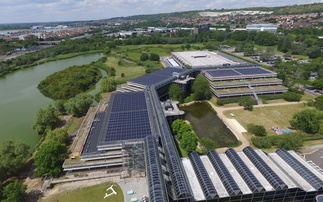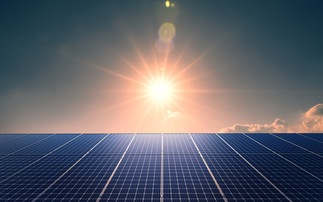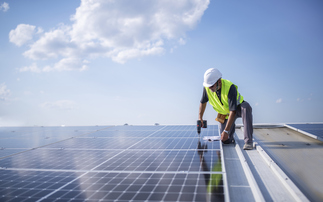Huawei's FusionHome promise to boost solar outputs with keeping the upfront investment in a reasonable scope, while also laying the foundations for a smart home energy revolution
With solar energy enjoying record-breaking popularity, many people are well aware of the benefits solar installations can bring. Lower energy costs, reduced carbon emissions, and a nice reputational boost can all result from a well-located solar installation. But what if there is a way to get more bang for your buck and maximise output from any individual installation?
That is the thinking behind the industry's pursuit of solar optimisation, as developers seek to use a range of cutting edge technologies to ensure each panel performs to its optimum, cutting costs, maximising carbon savings, improving grid performance, minimising supply chain impacts, and increasing the number of suitable installation sites available in the process.
One leading technology giant Huawei, has made optimisation a key plank of its solar offering with the launch of domestic solar technologies specifically designed to boost solar panel performance.
Huawei's FusionHome products aim to respond to the increasing demand for solar panels that can fit on wide range of rooftops, including areas which are partially or temporarily shaded, by shifting away from the full optimiser solution. The optimisation of the entire PV system means the impact of shadows on a few panels does not affect the performance of the whole system, resulting in a significant improvement compared with shaded modules connected to traditional string inverter, by which system power output is restricted.
The company's technology allows customers to install power optimisers on some modules located in areas shaded by a tree or a chimney, for example. This allows them to use the rooftop's full capacity without facing the costs associated with installing the optimiser where it might not be needed or may result in sub-optimal performance.
Huawei FusionHome solution uses power optimiser, one of the module-level power electronics (MLPE) technology. Huawei's FusionHome product is equipped with flexible application of power optimisers. Optimiser can not only be installed to each module for the enhanced safety requirement as well as that of module level monitoring, but also can be installed partially with modules in the string. When partially connected in the string, optimiser interacts to the inverter to maximize the conversion of solar energy by mitigating the module power mismatch.
According to Huawei, over 25 years, four modules can generate around 22,400 and 33,600kWh additional yields thanks to power optimisers. For customers, the optimisation will keep upfront costs down and improve return on investment.
Matthias Wagner, Huawei's director of business development and distribution in Europe and Central Asia, told BusinessGreen that the company chose power optimisers over microinverters because running multiple inverters risked reducing efficiency and increased the likelihood of failure. He added that fixing microinverters which had failed required climbing on the roof, which often led to higher costs and more disruption for panel owners.
The need to optimise the solar industry while reducing costs is a timely challenge in the UK, because despite the decreasing cost of renewable energy, the solar household market is in need of a boost.
Earlier this summer, the government revealed plans to scrap the Feed-in Tariff scheme, ending incentive payments for new small scale renewables installations from March 2019 and removing the export tariff that rewarded businesses and households for the power they provided to the grid.
And yet, a recent survey by YouGov commissioned by law firm ClientEarth, found that more than 60 per cent of the British public would install solar panels and home batteries if there was greater government support.
For Wagner, moves to optimise solar performance is not simply a matter of improving financial returns for customer, it is also a means of laying the foundations for an energy management revolution.
"FusionHome is the first step of home automation," he said. "It is the brain of your building in regards to energy management. This means that for all applications it can reduce energy consumption and therefore costs."
Under this vision, solar panel optimisation is a key part of the jigsaw that will result in a fusion between energy management and home automation systems, which could soon take in charging points for electric vehicles and energy storage units.
"In the near future, FusionHome could be able to integrate and manage other systems in the home," Wagner predicted. "But first we need to have better industry standards in home automation. Huawei has created an open interface to connect intelligent devices and in the future these devices will be as widespread as washing machines with Wi-Fi connections."
He added that this automation of energy management is likely to kick start in homes and residential buildings before being rolled out to larger scale developments, arguing that Huawei already has the expertise and technology to deliver these integrated energy management solutions.
"Huawei is a company driven by technology," he said. "Half of the employees are related to Research and Development and they are used to working in the telecom industry where the quality and reliability standards are on a complete different level than what we are used to in the solar industry."
Bringing that reliability and innovation into the world of solar components, may not just result in better financial returns and bigger carbon savings for households, it could also usher in a new era of greener and smarter homes.






